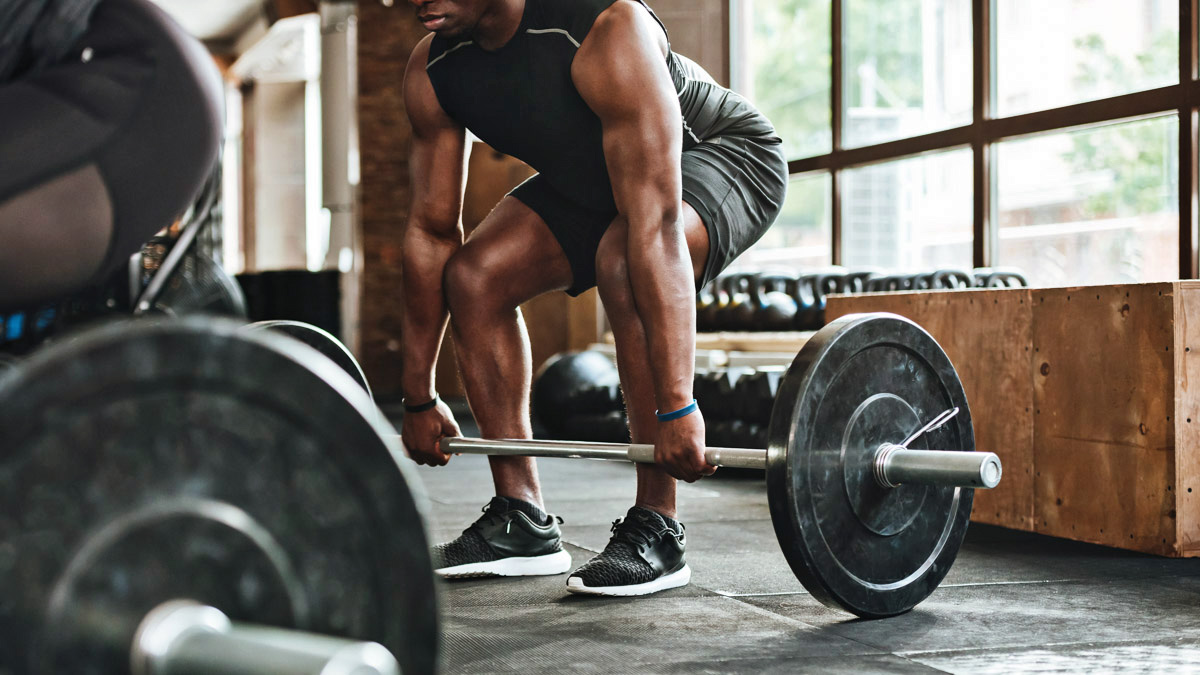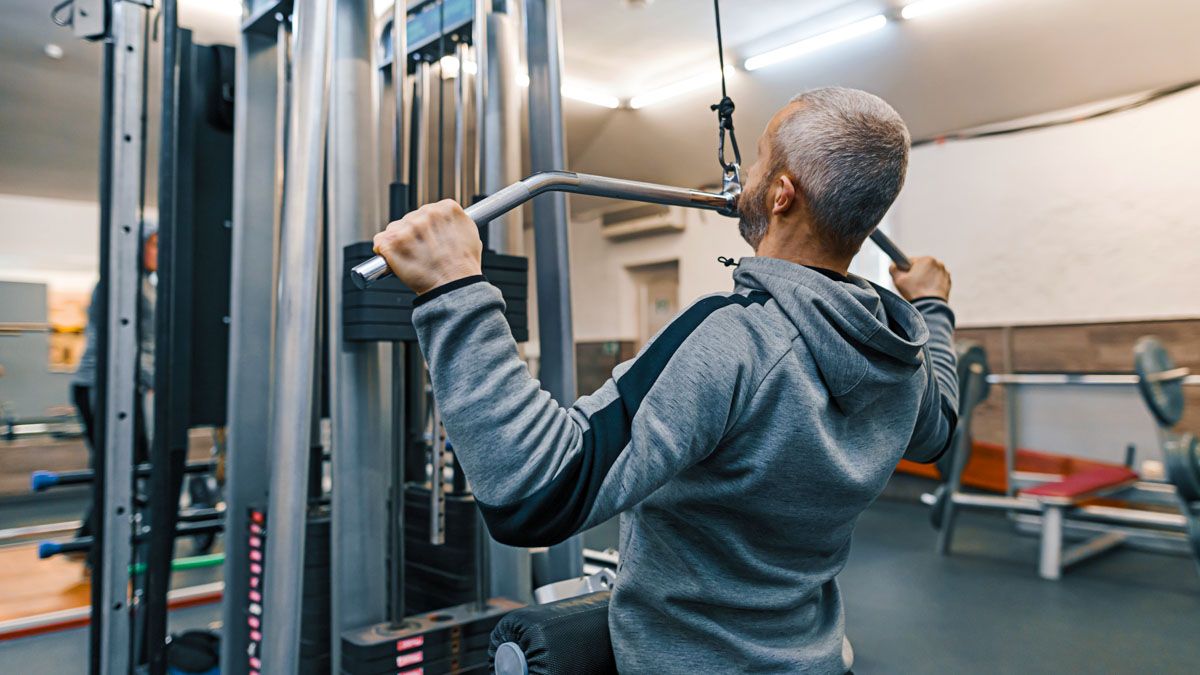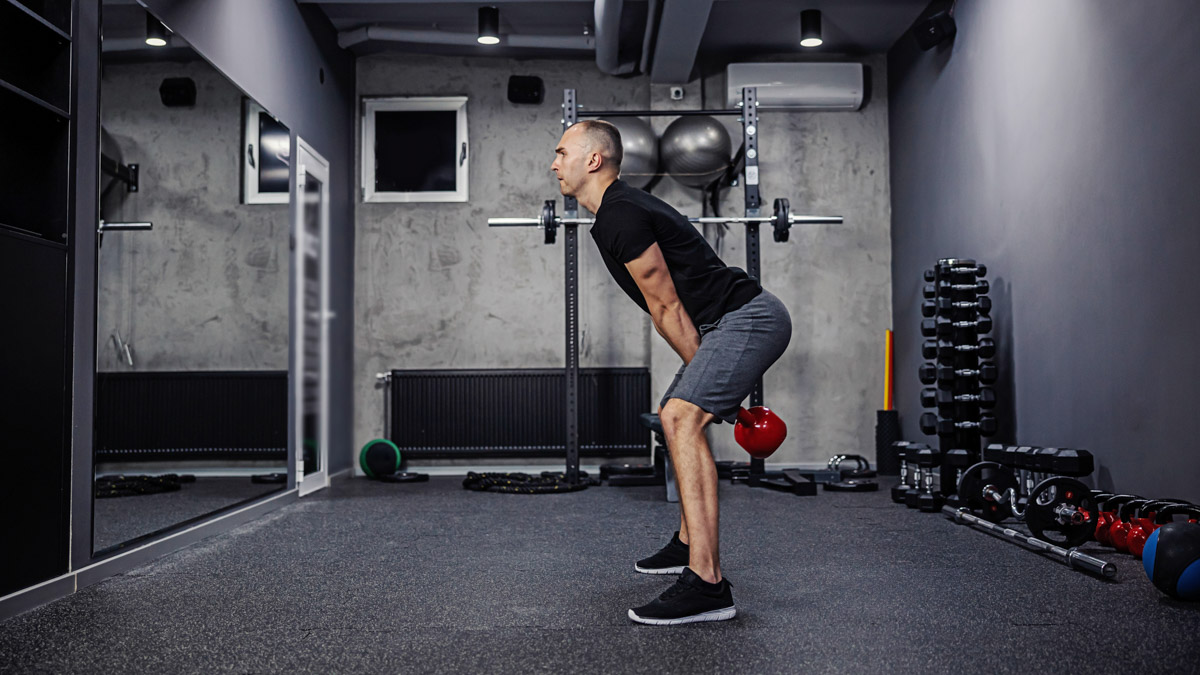A common question for endurance athletes who are getting started in the gym is “how heavy should I lift?”. Conventional wisdom would suggest that you should do lots of reps at lighter loads because this mimics endurance sports. However, your muscles are already getting plenty of endurance from cycling or running, so if you want to see the most benefit from the gym, your ultimate goal should be to lift heavy.
Heavy Lifting Benefits
The heavier a load that you lift, the more muscle fibers your body will need to recruit to lift that object. When lifting at or near maximal effort, your body must recruit nearly every muscle fiber in the active tissue to move that load. This is the reason why gym training is such an effective method for improving endurance performance.
When you maximally recruit all muscle fibers, you are enhancing the “neural pathway” from your brain to your muscles. Over time, your body must learn to synchronously fire your muscle fibers as efficiently as possible to lift a load. Teaching your muscles to work in unison with one another will transfer into improved efficiency on the bike.
When lifting heavy, you are improving your strength to a greater extent than lifting lighter loads. The ultimate goal of strength training is to improve force production (i.e., Power = Force x Velocity). If you improve your ability to produce force at any velocity (cadence) on the bike, you will improve your power. This is especially true at higher intensities where greater force must be produced.
Don’t Lift Heavy Right From the Start
When you first started out running or cycling, you likely were not as fit as many others who had been competing and training for much longer. What might have been a recovery workout for someone else was a very hard effort for you. It took years of dedication to get to where you are now. Similarly, strength training is a long-term practice that builds year upon year and you must continue to dedicate time to it to reap its full benefits.
If you’re new to the gym, you should not lift heavy. Your bones, tendons, ligaments, and muscles are not adapted to lifting heavy loads. As endurance athletes who often seek out pain, it can be tempting to go into the gym and try to lift as much as you can. If you do this, the best-case scenario is you will be too sore to walk for several days and never want to go to the gym again. The worst-case scenario is you won’t be able to walk for several months because you injured yourself!
Beginner Weight Lifting Routine
Your first few gym sessions should feel easy and should be focused on mastering proper lifting technique. Select high reps (12-20 reps) and low loads. For a squat, this would likely mean using a kettlebell or a barbell with no additional weight. Each time you go to the gym during this phase, increase your load by just a little bit (5 pounds or so on lower body exercises).
You will progress fast during this phase and you will feel noticeably stronger each week. Continue increasing the load so that you have a similar relative effort for every lift (approximately a 6 or 7 out of 10). This approach will minimize soreness while your body gets used to strength training. This phase should last 3-4 weeks.
Following this phase, you will want to decrease the rep range to 8-10 and increase the weight. However, for each set, you should still feel like you have one or two reps left in you. Similar to the last phase, gradually increase the weight when you feel stronger.
If you are new to lifting, you should not progress beyond this phase for your first off-season lifting “season.” Stay in this phase until you transition to your in-season maintenance phase. This will be sufficient stimulus to improve your strength without risking injury.
Providing you have continued to maintain strength in-season, you will be able to progress to even heavier loads next winter. Your body will have adapted to lifting regularly and your technique will likely be refined enough to handle heavier loads.
Again, you will start out with the first few weeks of lighter loads (12-20 reps) and then progress into 8-10 reps for the next couple of weeks. Once you feel ready, it’ll be time to hit the real heavy stuff. In this phase, you will start with 6 reps per set with the eventual goal of progressing to 3-4. You will want to take long rest periods of 3-5 minutes to recover between sets.
This phase will give you the greatest performance benefit. By the end of the winter, you will be stronger than ever before and ready to carry that strength into more specific training.
Do Not Lift to Failure
A common mistake by both novice and experienced lifters is “ego-lifting.” This is where you select a weight that is so heavy that it compromises good form and safety. If you cannot complete all the reps with good form, the weight is too heavy.
Additionally, pain-seeking endurance athletes try to treat strength training the same way they would treat a race by going “all-out” and lifting to failure, whereby you cannot successfully complete the last repetition with good form. You should always feel like you could do at least one more rep no matter how heavy you are lifting.
Research has not found any added performance benefit in lifting to failure compared to submaximal lifting, and maximal lifting also comes at great cost. Failure-lifting is very taxing on the body. If you lift this way all the time, your progress will stagnate and may eventually become overtrained.
Of course, lifting to failure is also extremely dangerous. Completing several sets at a submaximal effort has shown to provide more benefit than lifting to failure — with less risk.
Heavy Lifting is Not for Everyone
While all endurance athletes should do some form of strength training year-round, not everyone should lift heavy. Those with certain pre-existing conditions and older athletes will want to steer clear of heavy lifting. However, other methods of strength training can still provide you with great benefits and help to prevent injury, but this is beyond the scope of this article.
Strength training is only one side of the coin. It must be compatible with your sport if you are to see performance benefits. If you need guidance on proper periodization and integration of a concurrent training program, seek out a qualified professional.
References
Haff, G.G. & Triplett, N.T. (Eds.). (2015). Essentials of Strength Training and Conditioning: Fourth Edition. Human Kinetics.
Harris, G.R. et al. (2000, February). Short-Term Performance Effects of High Power, High Force, or Combined Weight-Training Methods. Retrieved from https://journals.lww.com/nsca-jscr/Abstract/2000/02000/Short_Term_Performance_Effects_of_High_Power,_High.3.aspx
Kramer, J.B. et al. (1997, August). Effects of Single vs. Multiple Sets of Weight Training: Impact of Volume, Intensity, and Variation. Retrieved from https://journals.lww.com/nsca-jscr/abstract/1997/08000/effects_of_single_vs__multiple_sets_of_weight.2.aspx
Nóbrega, S.R. & Libardi, C.A. (2016, January 29). Is Resistance Training to Muscular Failure Necessary? Retrieved from https://www.ncbi.nlm.nih.gov/pmc/articles/PMC4731492/
Stone, M.H. et al. (1996, June). Training to Muscular Failure: Is it Necessary? Retrieved from https://journals.lww.com/nsca-scj/Citation/1996/06000/Training_to_Muscular_Failure__Is_It_Necessary_.11.aspx
Stowers, T. et al. (1983). The Short-Term Effects of Three Different Strength-Power Training Methods. Retrieved from https://journals.lww.com/nsca-scj/Citation/1983/06000/The_Short_Term_Effects_of_Three_Different.3.aspx







